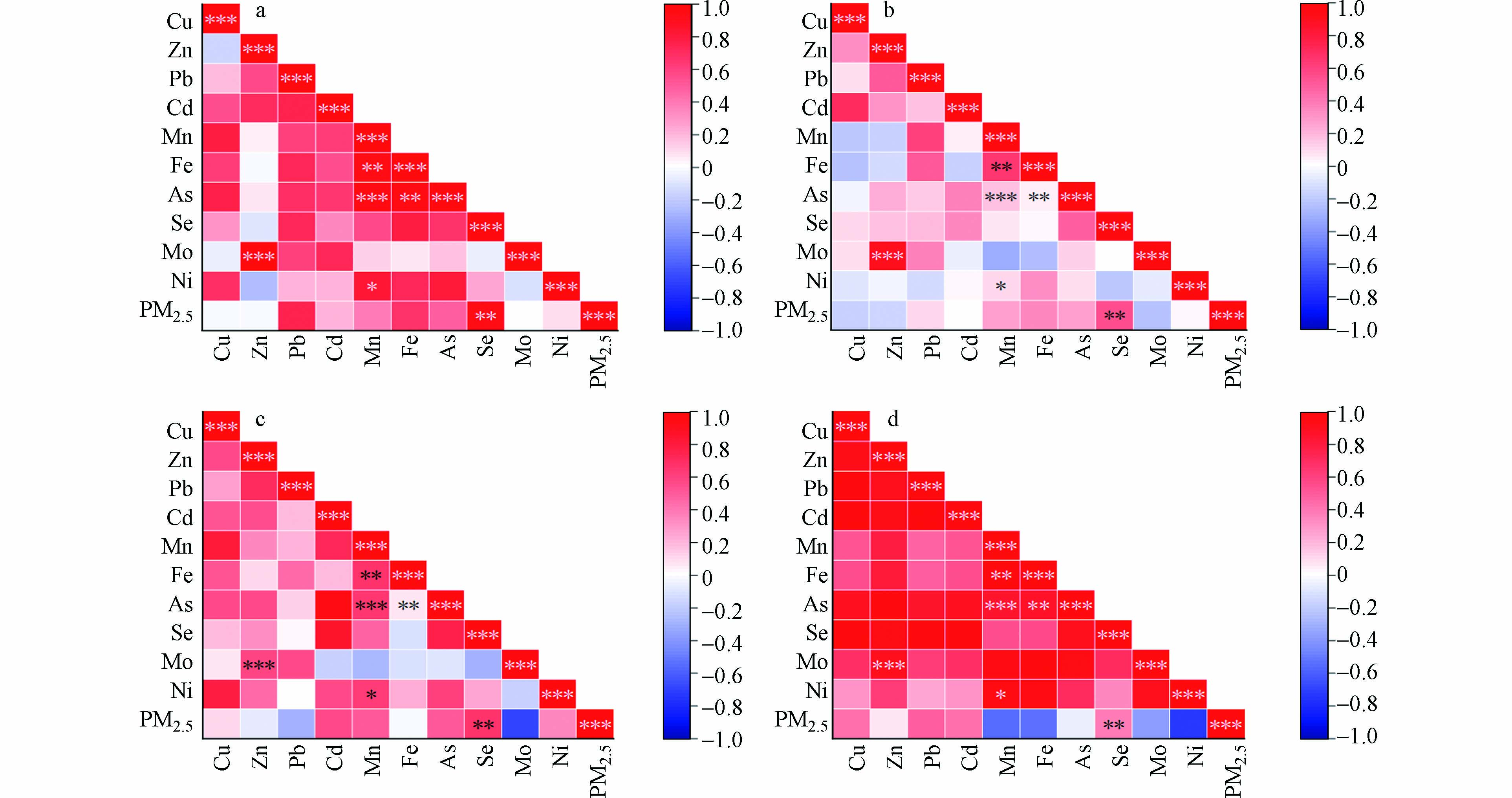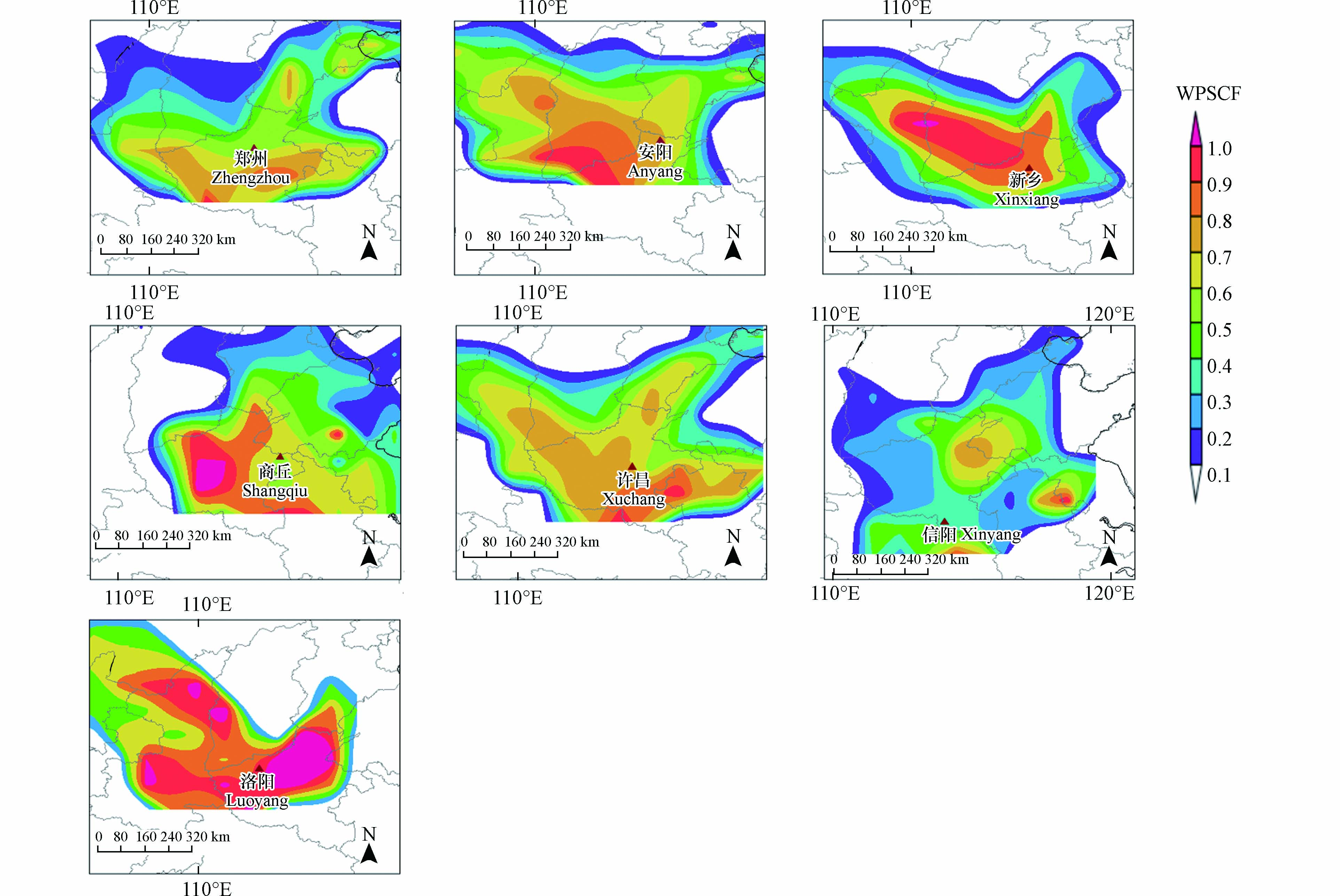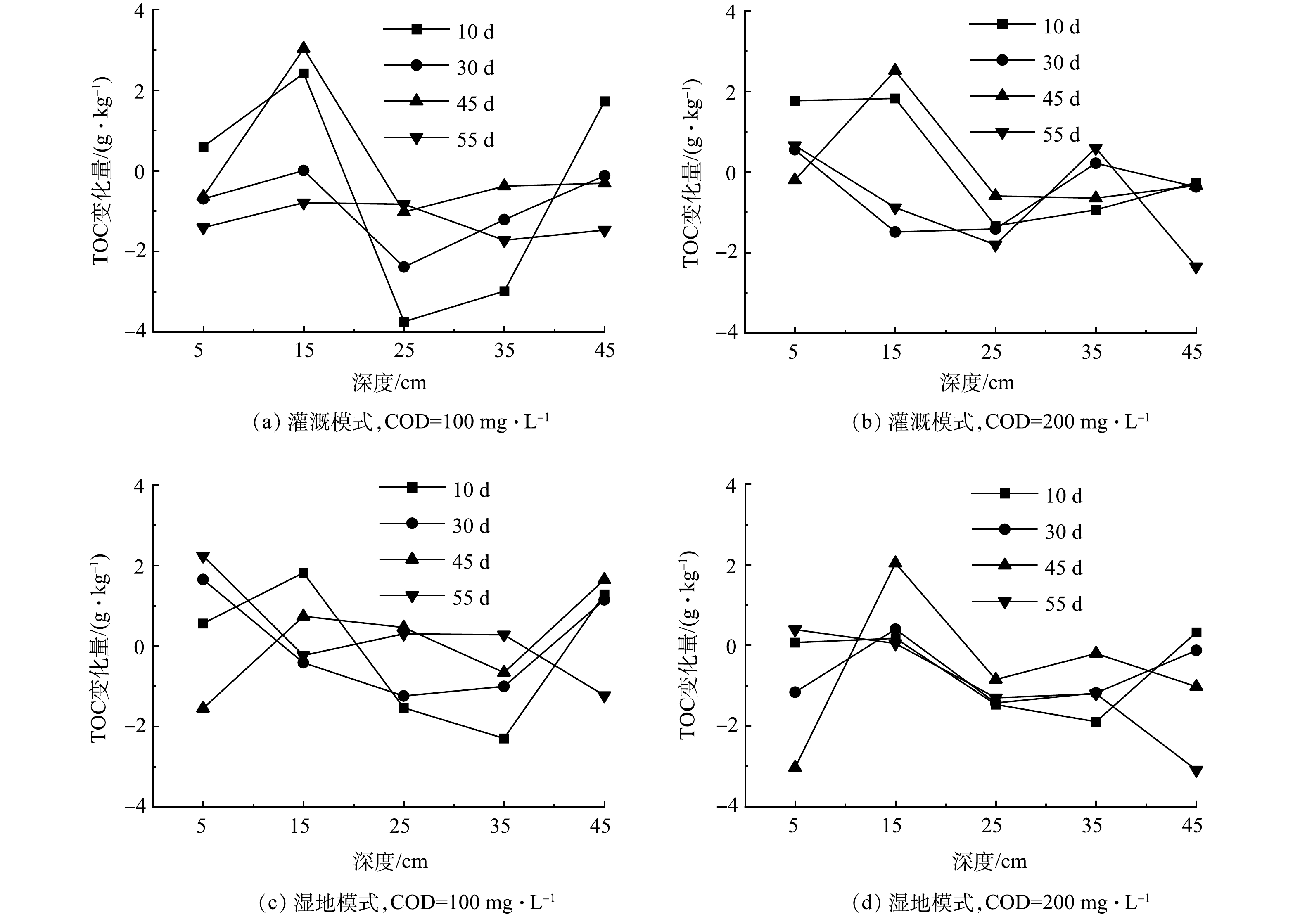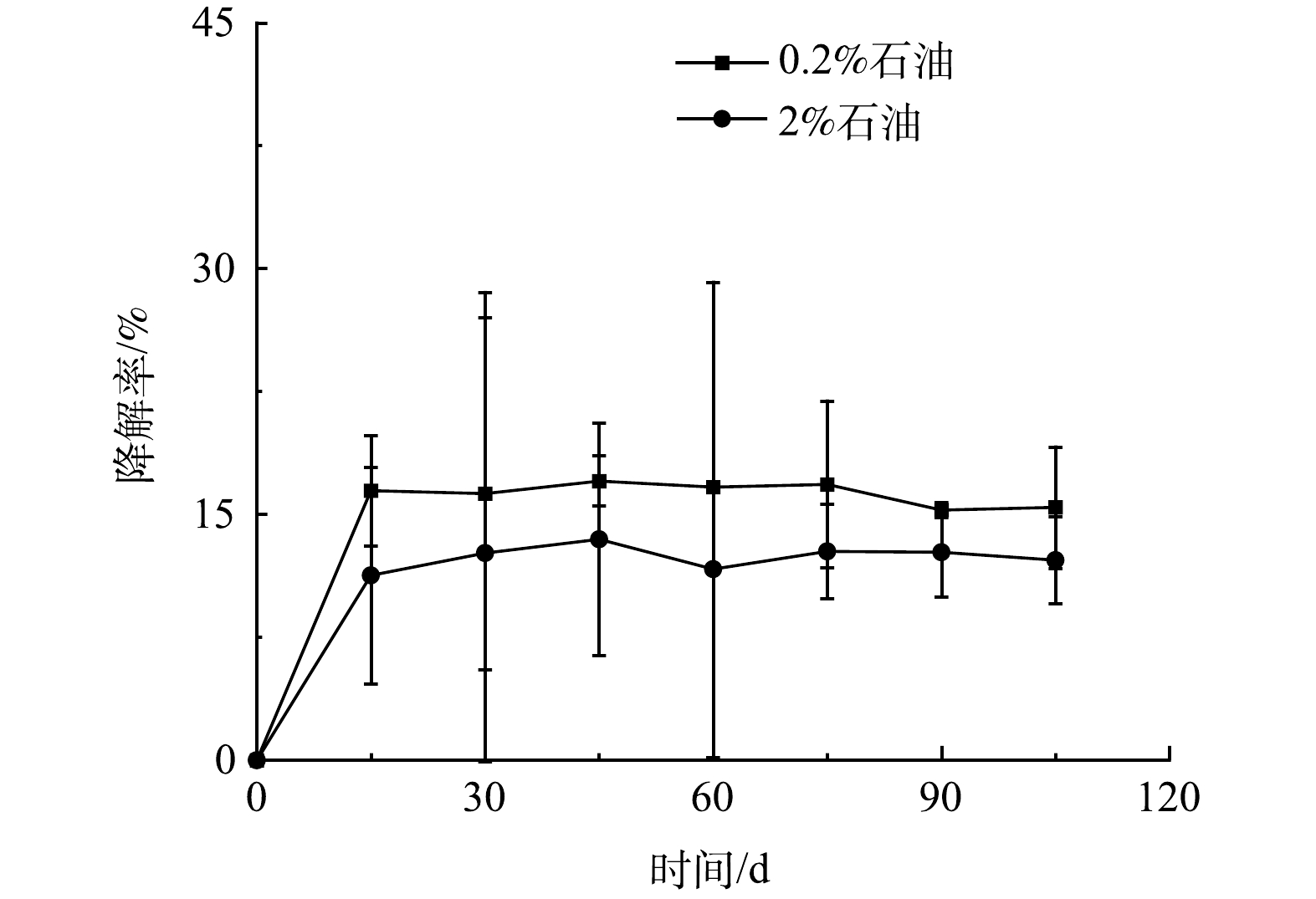-
西北干旱区既是我国石油天然气主产区,又是生态环境高度脆弱区,水资源仅占全国水资源总量的5.7%[1]。但水资源平均开发利用率却达到了53.3%。其中,新疆塔里木河和准噶尔盆地的水资源利用率高达79%和80%,远高于国际用水率安全线(40%)标准[2]。水资源短缺严重制约着西北地区社会经济的可持续发展和生态恢复[3]。
随着西北地区石油和天然气的快速开发[4],造成对清水的需求同步增长,废水排放量也呈逐年增加的趋势[5]。由于西北地区受纳水体少,直排荒漠土壤又无相关标准,只能将大量产油废水排入人工修建的蒸发池,通过自然蒸发的方式实现污水的减量化[6-7],导致水资源的巨大浪费。西北地区干旱缺水[8],实现油气田外排水的生态利用是解决西北地区水资源短缺和外排水处置矛盾最有效的策略之一[9]。虽然油气田外排水经过了达标处理,但其中还存在少量污染物/指标(TPH、COD、盐分)。因此,要想实现外排水的生态利用,就需要先明确典型污染物在荒漠土壤中的迁移转化规律。目前,关于土壤盐分的迁移已有较多报道。虽然已有研究[10-11]报道了TPH在土壤中的迁移规律,但大多数研究均是基于石油污染土壤后模拟自然降水观察石油类污染物的迁移情况,鲜有报道将油气田处理后的外排水分别模拟形成湿地和用于灌溉植物情况下研究TPH和COD在荒漠土壤中的迁移转化行为。
本研究以西部某油田外排水为研究对象,采集西北地区荒漠土壤制备土柱,模拟外排水形成湿地和用于灌溉植物(土壤含水率20%[12])这2种生态利用模式下,分别考察了外排水中不同浓度的TPH和COD在荒漠土壤中的迁移转化行为,并探究了荒漠土壤土著微生物对2类有机污染物/指标降解效果,本研究结果以期为油气田外排水生态利用可行性提供基础数据参考,进而为制定相应的生态利用技术规范和污染物控制标准提供参考。
-
实验用油为油田稠油,实验土样采自西北油田未受石油污染的原位分层土壤,经过前期对3个湿地周边土壤质地进行调研发现,排放区所在区域土壤质地均为沙质粘壤,土壤样品置于阴凉通风处风干,表层去除石块和树枝等杂物后研磨过2 mm筛后密封,避光保存。用于配制稠油水COD的液体样品采集回来后放在4 ℃冰箱保存。
-
1)含COD外排水土柱实验。COD外排水按照西部某油田COD组分进行配制:53.6%反相破乳剂、16.8%正相破乳剂、29.6%聚丙烯酰胺。将各组分充分混匀,用移液枪分别移取5.36 mL反相破乳剂、1.68 mL正相破乳剂、2.96 mL聚丙烯酰胺配成10 mL的COD废水,采用逐级稀释法进行稀释,用紫外分光光度计测定其COD值。用于土柱实验的为直径12 cm,高65 cm的有机玻璃柱,在土柱内壁薄涂上凡士林(防止淋溶水粘附在玻璃管内壁),在土柱底部铺上滤纸后填3 cm的石英砂防止土壤渗漏[13],将各层土壤去除树枝和石块过20目筛后依次填装,在填土过程中每10 cm的土,静置轻微压实1次,以减少边际效应的影响。
根据污水综合排放标准(GB 8978—1996)中石油类排放最低限值为10 mg·L−1,COD最低排放限值为100 mg·L−1。实验设置3个处理组,配制0 (CK)、100(油田目前排放浓度)、200 mg·L−1的稠油水溶液,每根土柱先用自来水淋透,模拟外排水用于灌溉植物和形成湿地后的情形,模拟外排水灌溉植物的情形每周浇灌,使土壤保持植物生长所需的含水率20%左右;模拟外排水形成湿地的情形使土柱上层保持10 cm的上覆水层。土柱底部用烧杯收集渗出液。每15 d在侧壁5、15、25、35、45 cm打孔取土样进行TOC的测定,同时对渗出液COD进行测定。
2)含石油外排水土柱实验。用成分是硬脂醇聚醚-21的乳化剂和石油比例为1:5配制石油水溶液,使用匀速均质乳化机,采用10 000 r·min−1,乳化5 min后,石油水溶液形成均匀的溶液。乳化后的稠油溶液设置3个处理组,配制0(CK)、10、50 mg·L−1的稠油水溶液。土柱的填装方法和淋滤同COD实验一样,定期对土柱各层的TPH和渗出液中的TPH测定。
3)土著土壤微生物对COD和TPH的降解实验。0~50 cm土壤过孔径2 mm筛后称取各层土壤200 g充分混匀。取500 g进行高压蒸汽灭菌,温度为121 ℃、压力为0.105 MPa下灭菌3次,每次灭菌20 min,间隔24 h灭菌1次,灭菌土壤置于通风良好、已灭菌的无菌操作室内待用。对照组是灭菌的土壤,在250 mL锥形瓶中取土30 g与150 mL 稠油水COD按1:5的比例混和搅拌均匀后在振荡培养箱中常温振荡,定期取4 mL上清液测COD值。
表层0~10 cm土壤过孔径2 mm筛后全部破碎过0.25 mm的筛,称取5 g和50 g稠油分别溶于装有一定量石油醚[14]的容量瓶中配制0.2%和2%石油污染的土壤,将其放在通风橱中使石油醚自然挥发。对0.2%和2%的石油污染土壤进行灭菌和不灭菌处理,然后在人工气候室模拟石油泄漏的情况。用湿度计定期监测土壤湿度,以保持20%[15](自然含水量在4.3%)的含水量。每周搅拌微生物系统内部的土壤,以确保有足够的空气。
-
有研究[16]表明,含COD废水进入土壤后以土壤总有机碳的形式存在。土壤中TOC的测定采用总有机碳分析仪(Vario TOC);渗出液和上清液中COD采用重铬酸钾消解比色法使用便捷式光度计(DR 1900)测定;土壤中TPH (C10~C40)的测定按照HJ 1021-2019采用气/质联用仪(6890N GC~5975C MSD和FID检测器)测定,渗出液中TPH (C10~C40)按照HJ 894-2017测定。
-
使用总有机碳分析仪测定土壤中的总有机碳时,每20个样品分析3个标准土壤样品和2个平行样品,以保证仪器的准确性。TPH的验证结果如表1所示。
-
各处理组土壤中各层TOC变化量如图1所示,含耗氧有机物(以COD计)的外排水进入土壤中会对土壤TOC含量产生以下2方面的影响:废水中的耗氧有机物(以COD计)排入土壤中后会转化为土壤TOC,增加土壤TOC的含量;水的冲刷和流动会导致土壤中可溶性有机质的流失,进而使土壤中的TOC含量降低。耗氧有机物(以COD计)的主要组分为正、反相破乳剂和聚丙烯酰胺,尽管一部分含耗氧有机物(以COD计)的废水进入土壤后以土壤TOC的形式存在,但此部分耗氧有机物(以COD计)与流失的TOC不尽相同,对于湿地和植物生长的影响将有显著差别。因此,本部分主要探究不同初始COD值在不同灌溉模式下对土壤TOC累积量的影响。由图1可以看出,无论采用何种灌溉方式,在不同COD的条件下,在排放初期(10 d)均会导致表层0~15 cm土壤中TOC含量有不同程度的增加,伴随着废水排放时间的延长,在45 d时,除湿地模式(COD=100 mg·L−1)处理外,其余处理土柱表层0~15 cm土壤中TOC累积量均达到峰值。实验持续55 d后,大部分处理几乎所有土层中TOC的累积量均呈现出负增长的状态。总体来看,无论采用何种灌溉模式,均会导致土壤中TOC累积量不同程度的减少,但是,较高COD值(COD=200 mg·L−1)会减缓土壤中TOC的流失量。
-
同步开展了对土壤渗出液中COD含量变化的研究。土壤渗出液每5 d收集1次,对渗出液的COD值进行测定。如图2所示,在0~15 d,各个处理渗出液中COD值变化量较大,且部分处理渗出液COD增量大于进水COD值,原因在于外排水导致土壤中有机物被淋洗出来。外排15 d后,尽管渗出液COD值变化有所波动,但各个处理渗出液COD增量整体呈现出下降的趋势,特别是灌溉模式下,55 d后,出水COD增量均低于10,显著低于湿地模式下渗出液中COD的增量。可见,灌溉模式下会减少废水中COD向地下水的迁移。渗出液中COD的减少,一方面受到土壤吸附的影响,另一方面,我们推测土壤微生物参与下的有机物降解有可能起到了更为关键性的作用[17]。因此,我们又进一步探究了土壤土著微生物对外排水COD的消减作用。
-
土壤土著微生物对COD的降解结果如图3所示,土壤浸出液中COD的含量在20 d内并没有出现明显的下降,观察到的COD的衰减归因于其中的有机分子吸附在粘土表面。但未灭菌处理土壤浸出液中COD在2 d后就出现了显著的下降,说明土壤颗粒的吸附和微生物降解降低了浸出液中COD值,此后下降速率慢慢减缓直至不变,分析原因开始的有氧环境为微生物消减COD提供了充足的条件,随着实验的进行,氧气和其他营养物质消耗殆尽不利于微生物生长,最终20 d后,各个处理的COD与初期相比分别降低了52.82%和55.56%。由此可见,土壤土著微生物对外排水COD的消减起到了至关重要的作用。
-
各土层TPH含量如图4所示,无论采用哪种利用模式,各个处理TPH主要累积于25 cm以上土层,越接近表层累积量越高,土壤对TPH的截留率可达90%以上。这说明土壤对TPH有极强的吸附作用。随着排放时间的增加,15 cm处TPH的累积量呈逐渐增加的趋势,TPH向土壤深处迁移的能力较弱,这与文献报道相一致[18]。可以看到,在相同利用模式下,外排水中TPH浓度越高,表层土壤TPH累积量越大;在TPH排放浓度相同的情况下,湿地模式表层土壤TPH累积量高于灌溉模式。说明污染物排放浓度越高,排放强度越大,表层土截留的TPH就越多。因此,低TPH排放浓度的灌溉模式有利于减少土层中TPH的累积。
-
由图5可以看出,无论采用何种利用模式,整个实验周期内土壤渗出液中TPH浓度均处于极低的水平。这进一步证明TPH难以向土壤深层迁移的特性。原因在于TPH是疏水粘性大分子物质,不溶于水且比水轻,到达土壤表面时易粘附在土粒表面,堵塞土壤中的毛细孔,使TPH难以向下迁移。外排水TPH初始浓度对渗出液中的TPH的浓度没有明显的影响。90 d后,湿地模式下渗出液中TPH浓度明显增高,且明显高于灌溉模式,虽然TPH不易在土壤中迁移,但湿地模式下由于水流量大,增加了TPH向地下水迁移的风险。
-
由于TPH主要在土壤表层发生累积,因此,我们进一步探究了不同利用模式下对土壤中组分变化的影响。如图6所示,实验开展3个月后,与对照相比,2种利用模式下C25以下组分的TPH占比均在不同程度上有所降低,但C26以上组分的TPH相对含量则显著提升,暗示短链的TPH在土壤中发生了微生物降解,而长链TPH不易降解并形成累积。为了验证以上猜测,进一步开展了土壤土著微生物对TPH的降解及组分变化的情况。
-
为了探究土著土壤微生物对TPH的降解效果,持续监测了含TPH外排水污染土壤后105 d土壤中TPH浓度变化。如图7所示,15 d后在TPH含量为0.2%和2%的污染土壤中其降解率分别达到了15%和13%,随后降解率趋于稳定。结果表明,降解率并没有随监测时间的延长而进一步提升,说明虽然TPH可作为碳源被微生物所利用降解,但由于氮、磷的缺乏成为微生物降解TPH的限制因素[19]。
-
土壤微生物对TPH组分的影响如图8所示。可见,在实验初期(0 d) C10~C20组分的含量占比最高,达到60%以上。随着时间的推移,C10~C20组分占比显著降低,虽然C21~C25在15 d时略有增高,但在105 d后,C10~C15、C16~C20和C21~C25的含量均明显降低,降解率分别为78%、55%和59%。这可能是TPH碳原子成键方式和分子质量的不同[20],使土壤微生物能够更好的利用短链烷烃。与此同时,发现C26~C40组分含量随着作用时间的延长有所增加。一方面是C26~C40组分碳链过长,微生物难以有效利用;另一方面,伴随着土壤微生物对石油污染物的生物同化作用,使土壤中的生物烃含量增加。
-
1) 2种利用模式均会造成土壤中TOC累积量的降低,导致土壤TOC流失,但灌溉模式下会减少外排水中COD向地下水的迁移,且土壤土著微生物会促进COD的降解,降低外排水COD向地下水迁移的风险。
2) 2种利用模式都会导致TPH在土壤表层的累积,但低排放浓度的灌溉模式有利于减少土层中TPH的累积;湿地模式下,渗出液中TPH明显高于灌溉模式,虽然TPH不易在土壤中迁移,但湿地模式下由于水流量大,增高了TPH向地下水迁移的风险;两种利用模式下,C25以下的TPH百分比都显著降低,但是C26以上TPH含量则显著提升。
3)土著土壤微生物会促进土层中TPH的降解,0.2%和2%石油污染土壤15 d后TPH降解率分别达到了15%和13%;土壤微生物倾向于利用C10~C15、C16~C20、C21~C25短链烷烃,难以有效利用C26~C40长链烷烃。
生态利用模式对油气田外排水中典型污染物在荒漠土壤中迁移和转化的影响
Effects of ecological utilization patterns on the migration and transformation of typical pollutants from oil and gas field wastewater in desert soil
-
摘要: 西北地区干旱缺水,但油气田外排水产量却呈逐年增加的趋势,外排水生态利用是解决西北地区水资源短缺和外排水处置矛盾的有效策略之一。为此,探究了在湿地和灌溉生态利用模式下水中典型耗氧有机物(以COD计)和石油烃(petroleum hydrocarbon)在荒漠土壤中的迁移和转化规律。原位土壤分层土柱实验结果表明,2种利用模式均会导致土壤中总有机碳(TOC)的含量有不同程度的下降,外排水COD的升高会减缓土壤TOC的流失,但会改变土壤TOC的组成。土壤微生物可有效消减外排水中COD,降低其向土壤深层迁移的风险。TPH易在土壤表层发生累积,但低浓度TPH排放的灌溉模式有利于减少土层中TPH的累积。湿地模式下由于水流量大,增加了TPH向地下水迁移的风险。土壤微生物对TPH的降解率可达15%,并导致C25以下的TPH相对含量显著降低,但C26以上组分的TPH相对含量则有所提升,原因在于短链TPH易被微生物降解,长链TPH不易降解并形成累积。以上研究结果可为油气田外排水生态利用可行性提供数据参考。Abstract: Water shortage is the main limiting factor in Northwest China, however, the production of oil and gas field wastewater in northwest China is increasing year by year. The ecological utilization of discharged water is one of the effective strategies to solve the contradiction between water resources shortage and discharged water treatment in northwest China. Therefore, this study explored the migration and transformation of typical oxygen-consuming organic matter (COD) and petroleum hydrocarbon (TPH) in desert soil under wetland and irrigation ecological utilization patterns. In-situ soil column experiments showed that both of the two utilization patterns could lead to the decrease of Total organic carbon (TOC) in varying degrees, the increased COD could reduce the loss of TOC, but would change the composition of TOC. Soil microorganisms could effectively reduce COD in efflux water and reduce the migration risk of COD to deep soil. TPH could accumulate in the surface soil, but the irrigation pattern with low TPH concentration was beneficial to reduce its accumulation. In wetland pattern, large flow increased the risk of TPH migration to groundwater. The degradation rate of TPH by soil microorganisms could reach 15%, resulting in a significant decrease in the relative content of TPH below C25, but an increase in the relative content of TPH above C26. The reason is that short chain TPH can be degraded by microorganisms easily, while long chain TPH is not easily degraded. The above research results can provide basic data for ecological utilization of oil and gas field wastewater.
-
Key words:
- oil and gas field wastewater /
- ecological utilization pattern /
- COD /
- TPH /
- soil microorganism
-
PM2.5是我国大气环境的主要污染物之一,不仅能降低道路能见度,还能够直接影响人体健康,近年来受到广泛关注[1]. PM2.5具有较强的承载能力,能够吸附细菌、重金属、有机物质、酸性氧化物等有毒实体[2],尤其是吸附的重金属能够在大气中停留达3—5 d[3]. PM2.5载带金属可能引发哮喘、心血管损伤等一系列疾病[4],由于重金属具有难降解性、生物富集效应、强隐蔽性[5]等特点,导致其对人体具有较强威胁,因此近年来环境中重金属的时空表征、来源解析、健康风险等逐渐成为研究热点. Zhao等[6]对运城市秋冬季PM2.5中重金属元素进行分析,结果表明随着污染程度加深,重金属元素浓度呈上升趋势; 陆平等[7]发现临沂市PM2.5载带金属浓度水平在冬春季最高,春秋季最低,重金属主要来源是燃煤、炼铜混合源; 毒理学研究显示,与PM2.5结合的金属可以聚集在次级脱靶组织(肝、心和脑),若接触或超负荷吸入PM2.5中的重金属会发生功能障碍甚至癌变[8]. 然而现有研究大都集中于某些大中城市的迁移、溯源和暴露机制等,对于大区域PM2.5载带金属研究较少.
空气质量指数(air quality index,AQI)是一种定量描述空气质量状况的无量纲指数[9],作为一个综合性指标,包括了颗粒物和SO2等气态污染物,能够一定程度上反映了区域空气质量现状[10]. 目前,AQI是政府和监测机构向公众表述大气污染程度和健康威胁最常用的方式之一,但不同空气质量条件下大气颗粒物中重金属的污染特征和风险评价还缺乏相应研究.
河南省毗邻河北省、山西省,是中国第一人口大省,也是我国的重要交通枢纽省份,其中郑州、安阳、新乡作为京津冀周边“2+26”城市,是大气污染的重点监测对象. 近年来,由于河南省电力、煤炭、采矿、制造等行业的快速发展,进一步加剧了大气重金属污染[11]. 本研究在2020年12月期间,监测了不同空气质量条件下河南省7个主要城市的PM2.5及其载带重金属浓度,通过富集因子、潜在贡献源、主成分分析和健康风险评估等方法,揭示了空气质量对PM2.5及其载带重金属的浓度特征和健康风险的影响规律,分析了大气重金属污染的主要来源,以期为河南区域大气污染防治政策的制定提供科学依据.
1. 材料与方法(Materials and methods)
1.1 样品采集与试验分析
本研究采样点布设在河南7个主要城市市区:郑州市(113.81°E,34.78°N)、洛阳市(112.43°E,34.71°N)、信阳市(114.04°E,32.15°N)、安阳市(114.41°E,36.10°N)、新乡市(113.91°E,35.33°N)、商丘市(115.68°E,34.43°N)和许昌市(113.79°N,34.06°N)(图1),采样时间为2020年12月,采集对象为PM2.5样本,采样点距离地面约20 m,每日连续采样时间为23.5 h,每个采样点采集6个样品,共计42个样品. 7个采样点四周均为学校、街道、居民生活等混合区,属于二类环境空气质量功能区,周围1 km内无工业园. 本研究依据环境空气质量指数(AQI)技术要求(试行)(HJ633—2012)划分空气质量污染等级[9]. 采样期间的气象资料来自真气网(https://www.zq12369.com/)和河南省空气质量预报发布系统.
本研究采用中流量采样器(TH-150,流量为100 L·min−1),选用石英纤维滤膜(90 mm,WhatmanTM),于马弗炉中450 ℃高温煅烧8 h,消除滤膜中有机物质[12]. 采集样品置于−20 ℃温度条件下,保存至样品分析. 采样滤膜皆为同一批样本,采集后的样本使用锡箔纸包裹. 在超净工作台中,各取1/2采集的石英滤膜样品,分别转移至含50 mL超纯水的无菌离心管中. 4 ℃条件下,在低速离心机中离心3 h,然后超声水浴10 min后,使用0.22 μm的聚醚砜滤膜过滤上清液,滤液冷藏保存,用于后续重金属分析. 采集的样品经预处理后,利用电感耦合等离子体质谱仪(iCAP™ RQ ICP-MS)定量分析元素Cu、Zn、Pb、Se、Mn、Fe、As、Mo、Ni、Cd、Al的含量. 样品分析过程使用混合标准溶液,标准曲线需达到0.999及以上. 样品测定前,准备空白试剂(超纯水)冲洗系统降低信号,待稳定后进行样本测定. 采样滤膜皆为同一批样本,设置膜空白、平行样本各2个进行质量控制. 平行样本相对标准偏差在20%以内. 使用土壤成分标准物质GBW-07402、GBW-07408,取等份样本,元素回收率在80%—120%. 样本分析过程采取严格质控措施[13--14].
1.2 富集因子分析法
富集因子法用来描述颗粒物中重金属元素的富集程度等级,判断元素的贡献来源(自然源、混合源或人为源)[15],计算公式为:
EF=(Ci/Al)样品/(Ci/Al)地壳 (1) 式中,Ci表示元素i的质量浓度,本研究选择Al为归一化的参比元素,因为Al在环境中分布均匀,变异系数低,性质稳定[16]. 当EF<1时,表示元素基本无富集,主要来源为自然源; 当1<EF≤10时,表示元素轻度富集,主要来源为混合源; 当EF>10时,富集程度等级随EF数值增大而加大,表明主要来源为人为源[17]. 各元素土壤背景值选用河南省土壤背景数值[18].
1.3 潜在源区贡献因子模型法(PSCF法)
本研究基于Meteoinfo软件中的TrajStat插件进行PSCF模型分析,识别大气污染物贡献源区的空间方位. 计算气团轨迹需要的气象数据来自美国国家气象局国家环境预测中心(NCEP)提供的GDAS数据,本文以0:00为起始时间,模拟逐日24 h的气团轨迹,起始高度为500 m,轨迹向后推迟时间为24 h,模拟时段为2020年12月1日—31日. PSCF模型通过分析观测站点某要素超过设定阈值的气团轨迹,创建分辨率网格(本文设置为1°×1°),并覆盖研究区域,辨认不同污染水平可能的贡献源区[19]. PSCF用公式定义为:
PSCFij=mij/nij (2) 其中,PSCFij表示第(i,j)网格单元中超过设定阈值轨迹端点数(mij)与该网格轨迹端点总数(nij)的比值. 本文阈值以24 h均值PM2.5浓度(75 μg·m−3)为污染标准. 为减少条件概率函数产生的不确定性[20-21],本研究引入权重因子(公式中nave代表网格单元中轨迹的平均端点数):
W(ij)={1.00,3nave<nij0.70,1.5nave<nij≤3nave0.42,nave<nij≤1.5nave0.17,nij≤nave (3) 1.4 主成分分析
通过“降维”的原理从多个变量中筛选出具有代表性的主要因子,因子能够最大程度解释所有变量代表的信息. 本研究利用SPSS26进行主成分分析,基于方差计算,降维提取特征值>1的3种主成分(本研究KOM检验>0.6,巴特利特球形度检验Sig<0.05,皆符合检验标准).
1.5 重金属健康风险评估法
本研究依据USEPA的人群暴露风险评估模型,计算PM2.5载带重金属元素经由呼吸途径的摄取剂量(健康评估暴露参数[22]如表1所示),评估1 h不同人群暴露于重金属元素中产生的健康风险. 参照综合风险信息数据库(IRIS),Cu、Zn、Pb、Se、Mn、Fe具有非致癌效应,As、Mo、Ni、Cd具有致癌效应. 非致癌物暴露剂量(ADDinh)和致癌物暴露剂量(LADDinh),计算公式如下[23]:
表 1 呼吸途径的健康暴露参数Table 1. Health exposure parameters for respiratory pathways人群Group 呼吸速率/(m3·d−1)IR 体重/kg BW 实际暴露时间/d EDinh 致癌物平均暴露时间/dAT 非致癌物平均暴露时间/d AT 重金属浓度/(mg·m−3) 男性 15.2 70 30×365×1/24 70×365 30×365 — 女性 11.3 60 30×365×1/24 70×365 30×365 — 儿童 8.7 36 18×365×1/24 70×365 18×365 — LADDinh=ADDinh=M×IR×EDinh/(BW×AT) (4) 重金属的非致癌风险(HQi)和致癌风险(CRi)的计算公式分别为:
HQi=ADDinh/RfDi (5) CRi=LADDinh×SF (6) 其中,HQi为某金属元素i的非致癌风险; CRi为某金属元素i的终身增量致癌风险[24-25]; RfDi为某金属元素通过呼吸途径的参考剂量,mg·(kg·d)−1; SF为斜率因子[5],(kg·d) ·mg−1; 当HQi>1时,金属i可能产生非致癌风险; 当HQi≤1时,该类金属可以忽略其非致癌风险[26]; 当CRi介于10−6—10−4之间,某金属i可能存在致癌风险; 当CRi>10−4时,某金属i具备较大致癌风险; 当CRi<10−6,某金属i可视为无致癌风险[27]; 重金属毒理学参数[28-30]如表2所示.
表 2 重金属毒理学参数Table 2. Toxicological parameters of heavy metals重金属Heavy metal RfDi / (mg·(kg·d)−1) SF / ((kg·d) ·mg−1) Cu 2×10−3 — Zn 3.01×10−1 — Pb 4.3×10−4 — Mn 1.43×10−5 — Fe 8×10−1 — As — 20.7 Mo — 4.95×10−3 Ni — 1.19 Cd — 8.40 2. 结果与讨论(Results and discussion)
2.1 PM2.5及其载带金属的浓度特征分析
采样期间空气质量以良至轻度污染为主,无极端污染事件发生. 采样期间PM2.5质量浓度范围在20.52—179.08 μg·m−3,平均值为(89.69±36.14 )μg·m−3,高于2020年河南省冬季PM2.5管控目标平均值68 μg·m−3,但相比2018年河南省PM2.5年均浓度103 μg·m−3明显下降.
大气颗粒物中的重金属浓度普遍随空气质量恶化逐渐升高(表3),除Mo以外,峰值都出现在轻度污染和中度污染. 在轻度污染和中度污染条件下,气象条件稳定,大气流动滞缓,大气在各个方向的扩散被抑制,污染物易堆积,易被PM2.5吸附[31],这是造成重金属浓度高于优良天气的主要原因. 本研究中,重金属浓度大小为:Zn>Fe>Al>Mn>Pb>Cu>As>Se>Mo>Cd>Ni. Zn和Fe是大气颗粒物中的主要重金属元素,平均浓度分别为(118.92±80.69) ng·m−3和(52.88±29.52) ng·m−3,两者之和占重金属总浓度的65.88%. As、Mo、Cd、Ni作为致癌金属,浓度均较低. 整体上,采样期间的大气颗粒物重金属浓度较前几年有所下降. 本研究中郑州市大气颗粒物中Zn平均质量浓度为66.52 ng·m−3,是其2018年冬季浓度均值的23%; 新乡市Zn平均质量浓度为190.05 ng·m−3,比其2019年冬季[32]浓度均值(205.11 ng·m−3)下降了7.3%. 与2018年郑州市冬季[33]的Mn(79.9 ng·m−3)、Pb(136.6 ng·m−3)、Ni(14.5 ng·m−3),以及2019年新乡市冬季[32]的Cd(5.87 ng·m−3)、Se(8.06 ng·m−3)相比,本研究的采样结果均有不同程度降低. 说明河南地区采取加快落后产能淘汰、严禁散煤复烧、超低排放改造等措施,对降低大气PM2.5等污染物初见成效,但随着污染控制边际递减效应的出现,则需要制备更精准的治污方案.
表 3 不同污染水平重金属质量浓度特征Table 3. Characteristics of heavy metal concentration at different pollution levels项目Project 优Excellent 良Good 轻度污染Mild Contamination 中度污染Moderately Polluted 均值±标准差Mean±SD 范围Range 均值±标准差Mean±SD 范围Range 均值±标准差Mean±SD 范围 Range 均值±标准差Mean±SD 范围 Range PM2.5* 27.78±8.50 20.52—37.48 69.29±14.39 54.48—84.56 113.90±18.29 100.76—131.44 169.45±7.77 160.04—179.08 Cu 5.18±2.93 2.42—11.00 6.10±2.73 2.87—16.50 9.59±4.71 4.20—20.19 8.40±2.66 4.96—11.43 Zn 81.14±68.13 27.16—225.86 69.71±52.48 15.58—177.70 86.60±44.51 42.83—200.15 103.00±31.05 59.14—126.66 Pb 3.66±1.78 1.22—6.70 6.23±4.04 nd—14.37 6.13±3.89 0.95—13.25 13.06±5.85 5.75—13.37 Cd 0.27±0.20 nd—0.51 0.39±0.37 nd—1.50 0.78±0.6 0.03—2.02 0.67±0.45 0.09—0.74 Mn 8.19±4.77 3.29—18.06 10.64±4.22 3.42—18.75 16.16±5.54 7.67—25.75 15.86±7.83 6.72—25.85 Fe 21.82±12.58 7.43—47.54 30.22±12.24 10.00—59.04 42.53±15.34 25.36—77.75 74.96±34.09 34.61—117.97 As 1.20±1.09 0.28—3.41 2.68±1.42 0.93—7.46 5.23±3.02 1.16—12.14 2.87±0.71 1.88—3.43 Mo 1.62±2.17 nd—5.92 1.41±1.72 0.03—6.70 0.87±0.25 0.40—1.25 0.68±0.14 0.50—0.84 Ni 0.31±0.11 0.20—0.52 0.32±0.16 0.16—0.97 0.45±0.15 0.33—0.86 0.49±0.14 0.36—0.69 Al 14.66±10.34 3.09—34.43 25.72±15.74 5.53—60.87 24.06±11.12 11.85±43.98 67.26±39.62 52.38—121.49 nd代表未检出; *表示浓度单位为 μg·m−3, 其他元素的浓度单位为 ng·m−3.nd indicates no detection; * indicates that the concentration unit is μg·m−3, and the concentration unit of other elements is ng·m−3. 2.2 PM2.5及重金属相关性分析
基于皮尔逊统计法,对PM2.5及其载带金属进行了相关性分析,结果如图2所示(图a、b、c、d依次为优、良、轻度污染、中度污染条件). PM2.5与Se均呈显著正相关(P≤0.001). 在大气轻度污染条件下,PM2.5与Se的相关系数最高,值为0.67,这可能是因为Se是燃煤的指示元素[34-35],冬季采暖期由于燃煤使大气中Se质量浓度升高,并参与形成颗粒物的前体物. 不同空气质量条件下,Mn、As彼此皆呈现显著相关性,相关系数在0.16—0.85之间. 这两种元素均与燃煤、生物质燃烧有关[36],因此推断两者具有同源性.
2.3 富集因子分析
重金属元素常存在金属矿石、化石燃料等原始材料中,经人为活动(燃料、焚烧、工业加工)释放到大气,参与跨区域的循环和沉降,通过富集因子分析可以了解污染物受人为因素的影响程度[37]. 本研究中,10种重金属元素的富集因子表现为(图3):轻度污染-中度污染>优-良,这与重金属浓度变化趋势相似. 根据EF富集程度分类,不同空气质量条件下Cd的富集因子均大于10,在轻度污染条件下富集程度最大,富集因子均值达38.64,这表明大气环境中的Cd元素主要由人为活动产生. 在大气轻度污染条件下,Cd元素富集能力最强,这可能与华北地区存在的大量工业和燃煤企业有关. 重金属Ni、Pb的富集因子均小于1,表明主要来自自然源; 重金属As、Cu、Zn富集因子在1—10之间,属于轻度富集水平,说明是受人类活动和地壳、扬尘等自然条件综合作用的结果.
2.4 潜在源贡献分析
如图4,潜在源贡献因子值越大,表示采样点更趋于受到红色区域气团轨迹的影响. 采样点重度污染源区(WPSCF>0.8)皆以受体点为中心向周边区域延伸,分布集中,基本无零星高值区. 研究显示,气团进行近距离传输时,速度快并能够携带大量颗粒物和气态污染物,因此高值区分布较为紧密[38].
郑州地理位置偏北,作为京津冀周边“2+26”城市之一,其高值潜在源区呈现“倒三角”型,细颗粒物可能吸附重金属进行河南省内部之间的迁移,进行短距离输送. 安阳和新乡属于河南北部城市,也属于京津冀周边“2+26”城市,高污染带在豫陕晋交界附近,同时也出现在河北省南部区域,并且中度污染网格也以重度污染贡献带为中心在京津冀传输通道扩散. 有研究显示,这几处高值区域皆为以煤烟型为特征的城市,存在大量工业锅炉和黑色金属冶炼产业,是污染频发地区,会传送“污染性”气团,进一步加重当地的污染[39].
洛阳作为汾渭平原重点管理区域,强潜在源区贡献带呈现条状分布,运行轨迹较长,沿西北至东南走向,区域覆盖宁夏陕西交界、陕西中部、山西省运城附近区域,低潜在源区最远至内蒙古,表明气团夹带污染物大概率沿汾渭平原盆地向河南地区扩散. 河南地势西高东低,属于温带季风气候,冬季气流自陆地至海洋,因此相较于河南东部城市,高值潜在源区分布更狭长,这与Liu等[40]对山西地区气团输送原因相似.
商丘强潜在源区覆盖区域基本在当地,部分存在于安徽省,携带重金属的颗粒物可能由安徽省宿州区域途径中高污染区到达商丘,跨区运输相互影响. 信阳作为豫鄂皖三省交界处,地理位置偏南,当地和周边重工业基地、煤炭企业较少,因此整体强污染源区贡献不明显. 许昌作为河南中部城市,高值区集中于河南地区,以河南地区内部的气流交换为主,但整体潜在源区分布较长,延长至内蒙古南部,属于气流的远距离传输. 由于内蒙古戈壁沙漠的远距离输送,采样点可能受到沙尘的影响.
2.5 主成分分析解析重金属来源
通过对空气质量等级为优、良、轻度污染、中度污染的样本数据进行主成分分析,提取的主成分分别可以解释总变量的83.98%、50.42%、69.69%、80.07%. As、Mn为燃煤产生的主要标识元素[41-43],两者呈现显著的相关性,表现高度同源性(表4). 因此认定在空气质量等级为优时,主成分1为燃烧贡献源. Zn主要源于机动车尾气[44],也与车辆零件损耗有关. Mo矿在河南分布广泛,Mo主要应用于合金冶炼、钼-钴-镍炼油催化剂、耐热和防腐的结构钢. 因此认定在空气质量等级为良时,主成分1为交通源,主成分2为工业源; 空气质量等级为中度污染时,主要贡献源为交通源. Cd作为主要载荷成分,富集因子值大于10,与人类活动紧密相关,主要由燃煤过程产生,认定大气轻度污染条件下,主要贡献源为燃烧源. 采样时间处于冬季供暖高峰期,大气可能发生逆温现象,且冬季风速较低,污染物不易扩散. 采样区域位于居民生活区,交通高峰期可能由于交通工具怠速导致机动车尾气释放到大气. 因此,4种空气质量等级下,重金属元素主要污染源解析为燃烧源和交通源.
表 4 重金属元素主成分解析Table 4. Principal component analysis of heavy metal elements项目Project 优Excellent 良Good 轻度污染Mild contamination 中度污染Moderately polluted 方差百分比/%Percentage of variance 主载荷元素Main load element 方差百分比/%Percentage of variance 主载荷元素Main load element 方差百分比/%Percentage of variance 主载荷元素Main load element 方差百分比/%Percentage of variance 主载荷元素Main load element 主成分1 56.15 As、Mn 27.04 Zn 47.78 Cd 80.07 Zn 主成分2 27.83 Zn 23.38 Mn 21.91 Mo — — 累积百分比 83.98 — 50.42 — 69.69 — 80.07 — 主要来源 燃烧源 交通源 燃烧源 交通源 2.6 健康风险评估
本研究计算了不同空气质量下,不同人群重金属元素环境暴露1 h时的致癌和非致癌健康风险,显示人体对重金属暴露的敏感性. 表5和表6结果显示,同一种重金属元素,致癌风险成年男性>成年女性>儿童; 非致癌风险儿童>成年男性>成年女性,由于儿童和成人体重差异、呼吸速率不同等,导致儿童对环境污染物反应更敏感. 对于不同重金属元素,Mo致癌风险值最高,Ni致癌风险值最低; Mn非致癌风险值最高,Fe非致癌风险值最低. 其中6种非致癌金属对所有人群1 h的HQ值均小于1,不具备非致癌风险,但是要警惕金属的累积效应以及特定人群长时间暴露外部环境所产生的联合毒性. 空气质量条件为优时,Mo对成年男性、成年女性的1 h致癌风险值皆大于10−6,具有潜在致癌风险,其余金属元素对人体的致癌风险可以忽略不计. 非致癌和致癌暴露风险较高的元素Mn、Mo,大多来自燃烧源、工业源,要进一步加强对这些源头的控制.
表 5 不同污染条件重金属对不同人群的致癌风险值Table 5. Carcinogenic risk values of heavy metals under different pollution conditions for different populations污染情况Contamination condition 重金属Heavy metal 人群Population 成年男性(×10−7) 成年女性(×10−7) 儿童(×10−7) 优 As 0.97 0.84 0.64 Mo 12.66 10.98 8.46 Ni 0.01 0.01 0.01 Cd 0.10 0.09 0.06 良 As 2.15 1.86 1.43 Mo 11.03 9.57 7.37 Ni 0.01 0.01 0.01 Cd 0.13 0.11 0.09 轻度污染 As 4.20 3.64 2.80 Mo 6.81 5.91 4.55 Ni 0.02 0.02 0.01 Cd 0.25 0.22 0.17 中度污染 As 2.31 2.00 1.54 Mo 5.36 4.65 3.58 Ni 0.02 0.02 0.02 Cd 0.22 0.19 0.15 表 6 不同污染条件重金属对不同人群的非致癌风险值Table 6. Non-carcinogenic risk values of heavy metals under different pollution conditions for different populations污染情况Contamination condition 重金属Heavy metal 人群Population 成年男性(×10−5) 成年女性(×10−5) 儿童(×10−5) 优 Cu 2.34 2.03 2.61 Zn 0.24 0.21 0.27 Pb 7.71 6.69 8.58 Mn 518.27 449.51 576.80 Fe 0.02 0.02 0.03 良 Cu 2.76 2.39 3.07 Zn 0.21 0.18 0.23 Pb 13.12 11.37 14.60 Mn 673.40 584.05 749.45 Fe 0.03 0.03 0.04 轻度污染 Cu 4.34 3.76 4.83 Zn 0.26 0.23 0.29 Pb 12.90 11.19 14.36 Mn 1022.65 886.97 1138.15 Fe 0.05 0.04 0.05 中度污染 Cu 3.80 3.29 4.23 Zn 0.31 0.27 0.34 Pb 27.49 23.84 30.59 Mn 1003.34 870.22 1116.65 Fe 0.08 0.07 0.09 总体来说,轻度和中度污染下重金属人体暴露健康风险接近,并且明显大于优-良天气(重金属Mo除外),但即使没有达到健康风险阙值,污染加重时也要注意个人防护,尤其是易感人群和儿童[45],他们对外界环境耐受性小,即使暴露时间短,也有一定的潜在风险存在.
3. 结论(Conclusion)
(1)采样期间空气质量以良至轻度污染为主,PM2.5平均值为(89.69±36.14) μg·m−3. 大气颗粒物中的重金属浓度普遍随空气质量恶化逐渐升高,除Mo以外,峰值都出现在轻度污染和中度污染. 重金属浓度大小依次为:Zn>Fe>Al>Mn>Pb>Cu>As>Se>Mo>Cd>Ni.
(2)分析结果显示,不同污染条件下Cd的富集因子均大于10,表明大气环境中的Cd元素主要由人为活动产生,可能来自燃烧源. Mn、As彼此呈现显著相关性,可能与燃煤、生物质燃烧有关. 本研究大气颗粒物重金属主要来自燃烧源和交通源.
(3)潜在源贡献分析显示,高值贡献区皆以受体点为中心,受体点周边区域具有输送效应,会吸附当地污染物质到达覆盖区域. 其中,洛阳市污染源区以条状分布,其余地区呈团状,分布较紧密.
(4)健康风险评估显示,成年男性的致癌风险最大,儿童的非致癌风险最大; Mo致癌风险最高,Mn非致癌风险最高. 空气质量条件为优时,Mo对成年男性、成年女性的1 h致癌风险值皆大于10−6,具有潜在致癌风险,其余金属元素对人体的致癌风险可以忽略.
-
表 1 TPH的验证结果
Table 1. Verification results of TPH
测定项目 检出限/(mg·kg−1) 测定下限/(mg·kg−1) 线性系数 精密度/% 准确度/% 平行样精密度/% 校准点相对误差/% 样品加标回收率/% 验证数据 0.478 1.914 0.999 7 9.692~11.179 92.511~97.582 1.051~1.362 −6.14~2.16 78.24~85.24 标准方法 6 24 ≥0.999 ≤25 70~120 ≤25 ±10 50~140 -
[1] 贾路, 于坤霞, 邓铭江, 等. 西北地区降雨集中度时空演变及其影响因素[J]. 农业工程学报, 2021, 37(16): 80-89. doi: 10.11975/j.issn.1002-6819.2021.16.011 [2] JIANG L W, TONG Y F, ZHAO Z J, et al. Water resources, land exploration and population dynamics in arid areas-the case of the Tarim River basin in Xinjiang of China[J]. Population and Environment, 2005, 26(6): 471-503. doi: 10.1007/s11111-005-0008-8 [3] DENG M J. Three Water Lines strategy: Its spatial patterns and effects on water resources allocation in northwest China[J]. Acta Geographica Sinica, 2018, 73: 1189-1203. [4] ZHU Y N, WANG J H, HE G H, et al. Water use characteristics and water footprints of China's oil and gas production[J]. Resources, Conservation and Recycling, 2022, 184: 106428. doi: 10.1016/j.resconrec.2022.106428 [5] MA J Z, PAN F, HE J H, et al. Petroleum pollution and evolution of water quality in the Malian River Basin of the Longdong Loess Plateau, Northwestern China[J]. Environmental Earth Sciences, 2012, 66(7): 1769-1782. doi: 10.1007/s12665-011-1399-8 [6] KAVVADIAS V, DOULA M K, KOMNITSAS K, et al. Disposal of olive oil mill wastes in evaporation ponds: effects on soil properties[J]. Journal of Hazardous Materials, 2010, 182(1/2/3): 144-155. [7] STEFANAKIS A I, PRIGENT S, BREUER R. Integrated produced water management in a desert oilfield using wetland technology and innovative reuse practices[J]. Constructed Wetlands for Industrial Wastewater Treatment, 2018: 25-42. [8] ZHANG C, ANADON L D. Life cycle water use of energy production and its environmental impacts in China[J]. Environmental Science & Technology, 2013, 47(24): 14459-14467. [9] STEFANAKIS A I, Al-HADRAMI A, PRIGENTt S. Reuse of oilfield produced water treated in a Constructed Wetland for saline irrigation under desert climate[C]//7th International Symposium on Wetland Pollutant Dynamics and Control (WETPOL), Montana, USA. 2017: 21-25. [10] 黄廷林, 史红星, 任磊. 石油类污染物在黄土地区土壤中竖向迁移特性试验研究[J]. 西安建筑科技大学学报:自然科学版, 2001, 33(2): 108-111. [11] SUN X N, LIU A P, CHEN X R, et al. Research on the migration of petroleum hydrocarbon contamination in the soil in different leaching amount//Advanced Materials Research[J]. Trans Tech Publications Switzerland, 2012, 414: 121-125. [12] HAO X M, CHEN Y N, LI W H, et al. Hydraulic lift in Populus euphratica Oliv. from the desert riparian vegetation of the Tarim River Basin[J]. Journal of Arid Environments, 2010, 74(8): 905-911. doi: 10.1016/j.jaridenv.2010.01.005 [13] 罗懿. 石油在黄土壤中的垂直迁移特征及生态毒性研究[D]. 西安: 西安建筑科技大学, 2021. [14] 李宝明. 石油污染土壤微生物修复的研究[D]. 北京: 中国农业科学院. 2007. [15] WU M L, DICK W A, LI W, et al. Bioaugmentation and biostimulation of hydrocarbon degradation and the microbial community in a petroleum-contaminated soil[J]. International Biodeterioration & Biodegradation, 2016, 107: 158-164. [16] SCHREIBER J D, DUFFY P D. Organic carbon and oxygen demand relationships in stormflow from southern pine watersheds[J]. Soil Science Society of America Journal, 1982, 46(1): 142-148. doi: 10.2136/sssaj1982.03615995004600010027x [17] CHEN L, HUANG M, JIANG X B, et al. Pilot tests of microbe-soil combined treatment of waste drilling sludge[J]. Natural Gas Industry B, 2, 2015, 2(2-3): 270-276. doi: 10.1016/j.ngib.2015.07.021 [18] 郎梦凡. 石油烃在不同土壤中的挥发及迁移规律研究[D]. 咸阳: 西北农林科技大学. 2022. [19] 马双. 油污土壤石油降解真菌的分离、鉴定与降解效果分析[D]. 哈尔滨: 东北林业大学. 2010. [20] 翟晓波, 盛益之, 张旭, 等. 混凝—气浮工艺处理有机物污染地下水现场中试试验[J]. 化工环保, 2018, 38(1): 33-39. -





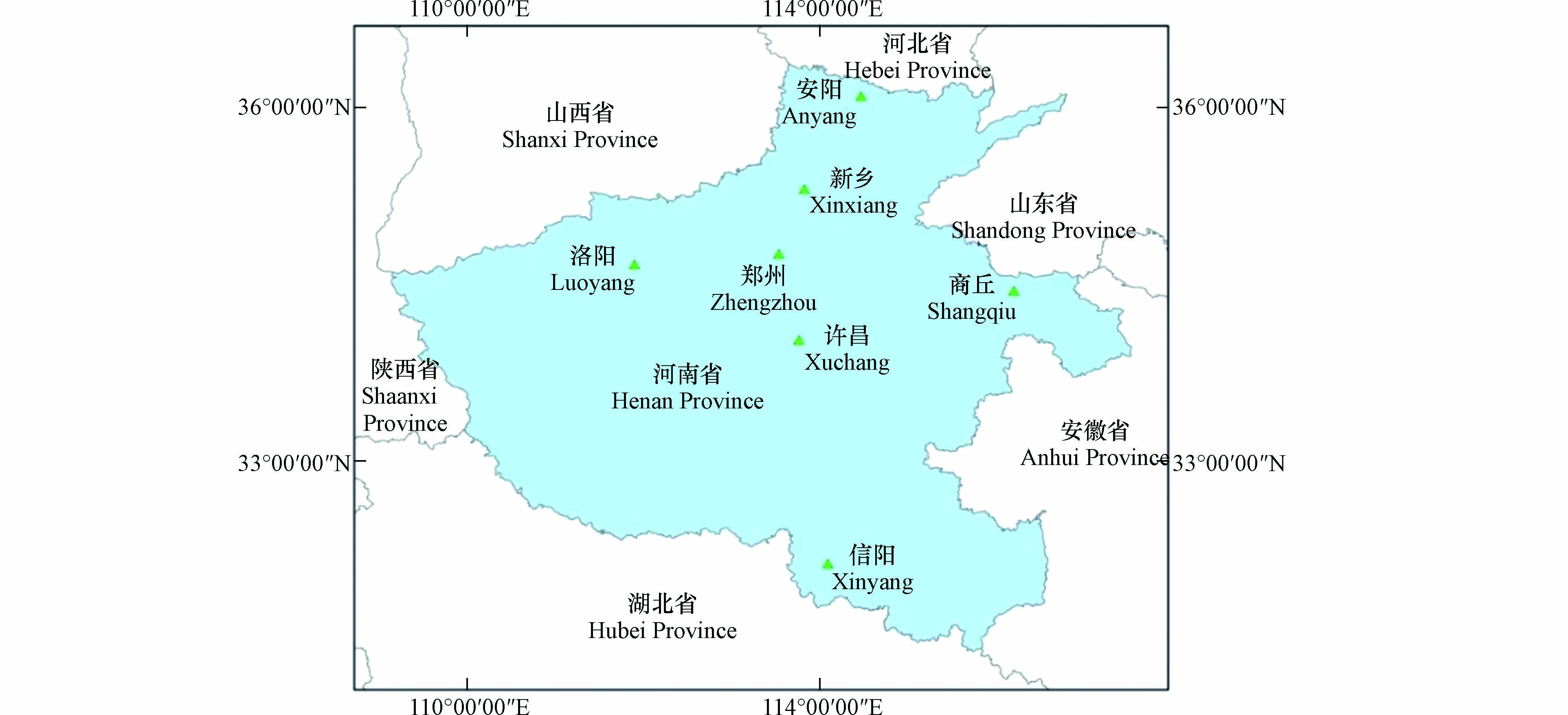
 下载:
下载:
